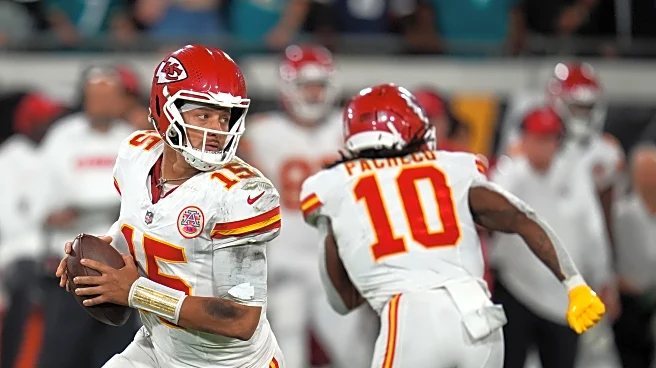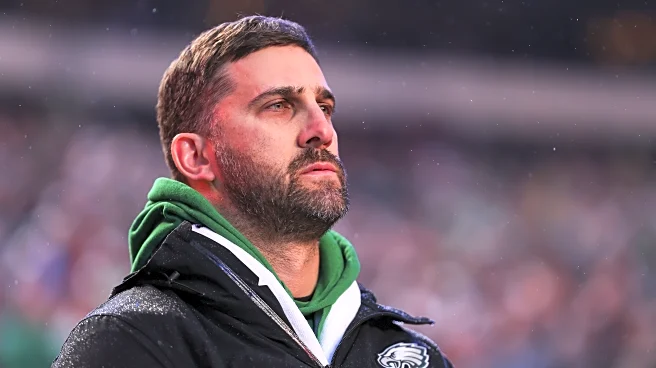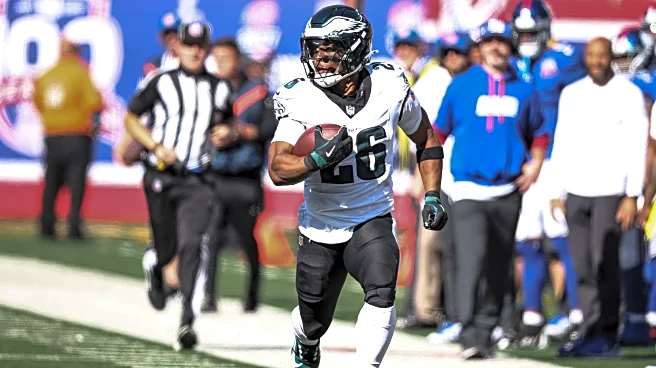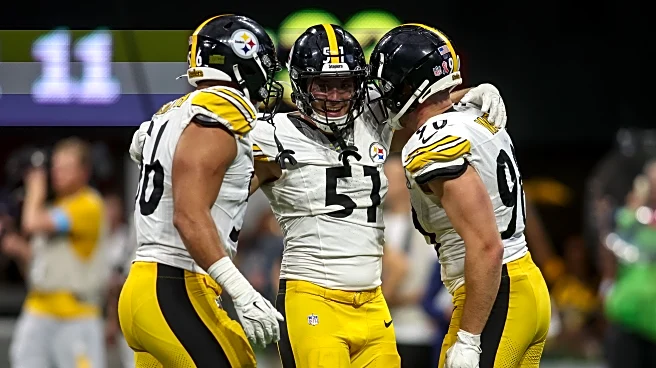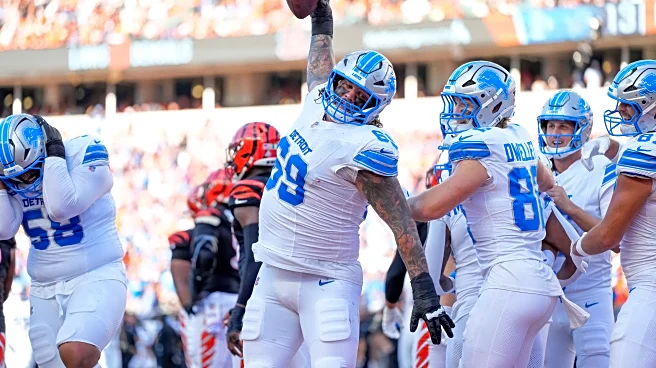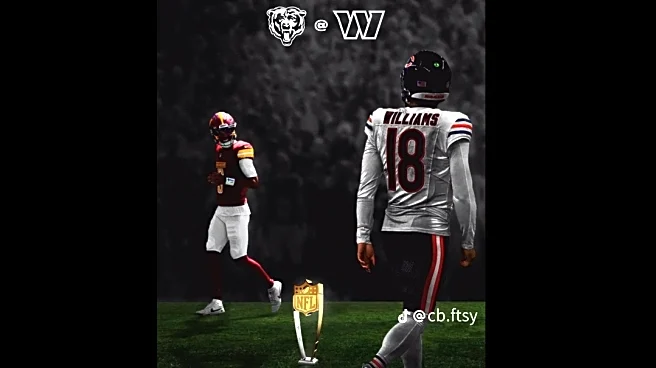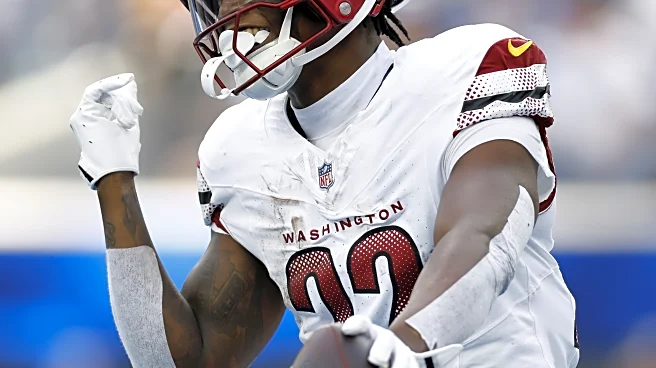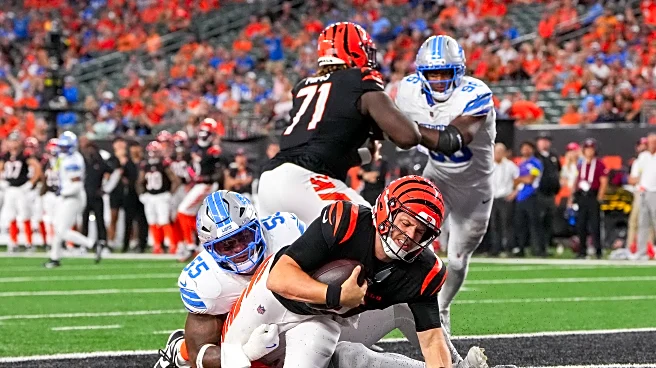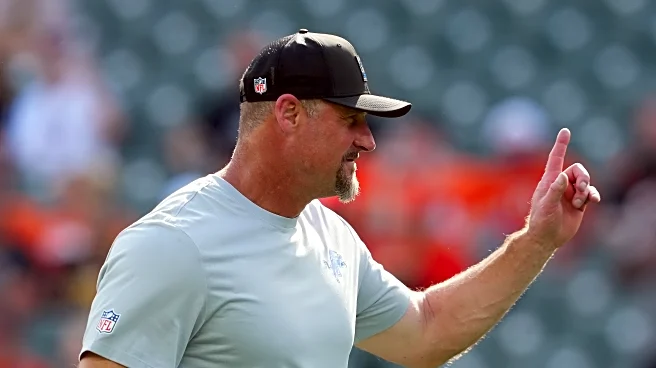The 5 o’clock club is published from time to time during the season, and aims to provide a forum for reader-driven discussion at a time of day when there isn’t much NFL news being published. Feel free
to introduce topics that interest you in the comments below.
CLICK HERE to see the full 5 o’clock club archive
Special teams have been more special for the Commanders this season
I think that Washington’s special teams play has had a bigger positive impact in 2025 than we, as fans, generally think about. Prior to the implementation of the ‘dynamic kickoff’ last year, special teams play had been relegated – in terms of significant plays – to a few big punts or punt returns per season.
I don’t think many NFL fans have quite gotten their heads around how much more impact the kickoff has on team success or failure now than it did just two or three years ago. I’d argue that an almost-hidden aspect of Washington’s success in 2024 has been the commitment of Washington coaches to making kickoff coverage and returns a point of competitive advantage. I have written repeatedly over the years — sometimes in articles and often in comments — about the impact of field position on scoring, and therefore, on wins and losses.
Consider this information from Advanced Football Analytics:
Think of an offensive drive not in terms of a series of passes and runs, but in terms of a chain of first downs, regardless of how they are achieved. To arrive in scoring position a team needs not just yards, and not just 1st downs, but consecutive first downs. The success rate for achieving a 1st down on each series has been 65% over the past 5 years.
On average, an NFL offense needs 3.7 first downs (including the score itself) to score a touchdown. Therefore, the estimated TD rate would be 0.65^3.7 = 0.20 TDs per drive. (Note: The actual share of drives that resulted in touchdowns over the past five years is very close–19%.)
A difference of only 3% in the chance of scoring a TD on a typical offensive drive may seem very small, but it has a large impact on points. Given a league average of 12.4 drives per game (according to KC Joyner), the effect on two teams with a 4-yd difference in starting field position would be a 0.4 TD per game advantage to a team with a 4-yd field position edge, the equivalent of 2.8 points per game.
Here is perhaps a simpler way to conceptualize it. Instead of saying the team with lesser starting field position needs 0.4 more 1st downs per drive to score, we could say that they need a full additional 1st down in 40% of its drives.
For many seasons of football, exploiting field position, for Washington, meant that Tress Way was the team’s primary weapon. Starting last year, the coaches have also ‘weaponized’ the kickoffs and kickoff returns to create a field position advantage that translates on the scoreboard.
Kickoff coverage
KO coverage has been good so far this season. Washington ranks 6th in the NFL in average return yards allowed per kickoff, at 23.6. The team’s most recent opponent, the Chargers, happens to be the 6th worst at 27.5. That’s a net advantage (on average) of 3.9 yards to start each half and after every score.
That 3.9 yard differential, as we can see from the analysis presented above, should translate, over the course of a game, into points on the scoreboard.
Kickoff returns
The effect is more pronounced in the kickoff return aspect for Washington. The Commanders lead the league in average yards per return of 33.2. Washinton is one of ony two teams to exceed 27.6 ypr, and the only team to be above 30 ypr.
This advantage isn’t just a mathematical outlier due to one big return in a small statistical sample. While Deebo Samuel did produce a 69-yard return, that is only the 3rd-longest return in the NFL this season. More significantly, Washington leads the league in ‘explosive’ returns of 40+ yards with 4 such returns. Only one other team has more than two, and 18 teams don’t have any at all.
Again, this massive advantage should have a strong statistical correlation to points scored; that is, better starting field position leads to more field goals and touchdowns on average.
As it happens, Washington is ranked 8th in points per game through 5 weeks.
Punting
When it comes to punting, Tress Way’s average distance is a pedestrian 47.5 yards per punt (17th in the NFL), but the unit’s Net Avg (which factors in opponents’ return yards) is 13th in the NFL, indicating above average punt coverage.
Of course, those figures only count the punts that are returned. Tress is tied for 7th place with respect to punts downed inside the 20-yard line. Also, only 11 teams have punted fewer times than the Commanders (because, remember, Washington is scoring a lot).
Punt returns
When it comes to punt returns, Washington (rookie Jaylin Lane) ranks 7th in average yards per return. This is partly due to the mathematical effect of Jaylin Lane’s 90-yard return, but the Commanders are one of only 7 teams to have multiple returns of 20+ yards (11 teams have none at all).
Interestingly, only 2 teams (Vikings and Broncos) have more punt returns than Washington – a fact that seems counterintuitive for a team that is supposed to be struggling on defense.
What all of this adds up to is an advantage in field position – which means a potential advantage in scoring – that results from the coaches’ commitment to making Washington’s special teams matter.
As a fans, I love the fact that great special teams play is part of the Commanders identity.
How can Washington lead the league in rushing but be 28th in Time of Possession?
Time of Possession is an intriguing stat. It can be instructive, but dominating ToP shouldn’t be an end in itself unless it is correlated to points on the scoreboard.
In past seasons, lacking a franchise QB and often lacking a good defense, it was important for Washington to control ToP in order to reduce the number of offensive drives in a game, thus reducing scoring opportunities (for the other team) in hopes of staying close on the scoreboard and winning with one or two big plays.
Now that Washington has one of the league’s highest-scoring and potentially explosive offenses, it’s not as important to ‘win’ ToP, and there may be some good reasons why the Commanders have ‘lost’ the Time of Possession battle in every game they’ve played this year en route to a 3-2 record.
Let’s consider a few factors.
Explosive Runs
Washington leads the league in rushing yards per game, and Bill Croskey-Merritt leads the NFL in yards per carry. Both of these stats are related to the fact that the Commanders are tied with the Lions and Seahawks for the most running plays of 20+ yards (6), and are tied with Baltimore for the most running plays of 40+ yards (3).
A strong running game burns the game clock when it is the typical grind-it-out repetitive ‘3 yards and a cloud of dust’ offense. When a team is regularly ripping off 15-, 20-, and even 40-yard runs, as Washington has this season, the team’s time of possession looks more like that of a pass-heavy offense.
While Washington leads the league in rushing yards, the team ranks only 16th in rushing plays per game. Fewer runs means fewer running clocks.
That field-position metric we talked about earlier makes a difference
Remember how we discussed Washington’s starting field position above when we discussed kickoffs and kickoff returns? Well, based on those numbers, the Commanders simply don’t have to cover as much ground.
So…
While Washington ranks 8th in points per game, the offense ranks only 13th in yards per game. The Commanders aren’t having to cover as much ground as their opponents to get points on the board because they are starting out closer to the goal line.
That impacts time of possession – in this case, opponents’ higher ToP is related to their offenses having to go further to score. Jaylin Lane’s punt return for a touchdown factors in heavily here as well since it put 7 points on the board without really adding to Washington’s time of possession.
Two-minute / 4-minute offense
Broadly speaking, in two-minute offense, a team is trying to score before the end of a half or game. The team will usually rely on passes and clock stoppages to try to get as many plays in a limited time as they wind the clock to zero. In the case of a team trailing by multiple scores, an offense may run the 2-minute offense on more than one drive in the 4th quarter.
On the other hand, a team in 4-minute offense usually has a lead that they are trying to protect. The goal is to keep the clock running to reach the end of the half or game without giving the opposing offense a chance to take the field and score.
Looking through the game logs, I have tried to identify the number of times in each game that the Commanders offense was in 2-min or 4-min mode. When in doubt, I basically just looked at the number of passing or running plays. A drive made up almost exclusively of passes was counted as 2-min while a drive made up almost exclusively of runs was counted as 4-min. Any drive with balanced play calling was not counted.

The count shows that Washington has run three times as many 2-minute drives as 4-minute drives this season, which will tend to minimize time of possession. Interestingly, the 2-min drive against the Giants occurred while Washington had the lead and was simply trying to add to it before the half.
Penalties
The Commanders have been flagged 37 times in 5 games, which is about average for an NFL team, but of those penalties, 6 have been against special teams, 8 against the defense, and a whopping 23 have been against the offense – nearly 5 offensive penalties per game! Each of those flags stops the clock (if it is moving), thus, potentially reducing time of possession. This isn’t a huge factor, but then, ToP isn’t often a gaping chasm. A couple of extra clock stoppages per game could change the ToP by a noticeable amount.
Poor 3rd down efficiency
So far, the Commanders don’t appear to be sustaining offensive drives as effectively as they did in 2024.
Last season, Washington led the league in offensive plays per game (66); so far this season, they are 26th in the league with just 58 plays per game.
An obvious culprit is 3rd down conversion percentage. A year ago, Washington ranked 6th in the NFL (45.21%); this season, the team ranks 29th at just 32.7%.
BUT
While Washington’s low conversion percentage has been mentioned quite a lot this season, what few people realize is that this issue is mitigated somewhat by the fact that the Commanders have faced the fewest number of third-downs in the NFL (52) this season. By contrast, the Browns, who have faced the most in the league, have had 76 third-downs this year – that’s nearly 5 more 3rd-downs per game than Washington.
While many NFL observers see Time of Possession as an important metric in team success, it really isn’t unless the team is trying to play a specific type of game.
Washington is weaponizing special teams to optimize relative field position, and the offense is running fewer plays because the Commanders are getting more explosive plays – including in the run game. Sure, Washington leads the league in rush yards, but it is running only an average number of running plays per game. And while the 3rd-down conversion rate looks troubling, that explosive offense also means that the Commanders are facing fewer third-downs than any other team. All of this has an effect on the nature of Time of Possession for the Commanders. It is, perhaps interesting, but not critically important.
A word about winning in-conference games
Anyone who has spent years reading Hogs Haven will probably know that, whenever the Commanders are in the hunt for a wildcard playoff spot as we get to late November, I write a series of articles called “Wildcard Watch”. Those articles spend an inordinate amount of time discussing tie-breaking procedures and seeding for the NFL playoffs.
Ahead of the Green Bay game in Week 2 last month, I had an exchange with another Hogs Haven member in the comments in which we disagreed about the importance of the game. The other member’s view was that a win or loss at that point in the season (Week 2) was not as critical as one late in the season – like last year’s overtime game against the Falcons – that determines final qualification or disqualification of a team seeking a playoff spot.
I want to reiterate my stated view that the timing of victories and losses – while it may matter to intangibles like momentum or confidence – is irrelevant when it comes to playoff contention. A Week 2 loss or victory has the same effect as one in Week 17, we just don’t know the exact effect at the time. Every game, no matter which week of the season, plays a role in the success or failure of the team.
This week, I was a bit surprised when I looked at the NFC playoff seeding (such as it is after 5 weeks) following the Chargers game.
Only 4 NFC teams have more wins than the Commanders. In fact, the Packers, who have played to a tie and enjoyed an early bye week, have one less game in the win column, yet the Packers are ahead of the Commanders in the NFC rankings.
Dissapointingly, Washington is currently 8th in the NFC rankings, and as we all know, only 7 teams will make the NFC playoffs. When I looked at the details to see why we rank below every other team that has a 3-2 record, I saw that the Commanders are1-2 in NFC games (.333) while the other two teams with 3-2 records are .500 in conference play.
The next two games on the Commanders’ schedule come against the Bears and Cowboys. Both are in-conference and the Dallas game is in-division. To be well-positioned for playoff contention in December and January, it is important to win games against divisional and NFC opponents now.
In other words, Beating the Bears and Cowboys with a loss to the Chiefs would be preferable to getting wins in both Monday night games while losing to Dallas in between. Of course, winning them all would be ideal, but when it comes to playoff seeding, NFC opponents matter more than AFC opponents, and NFC East games matter the most of all.
So let’s get the win against Chicago on Monday night, adding a win to the team’s overall record, but also an important win against an NFC opponent!

